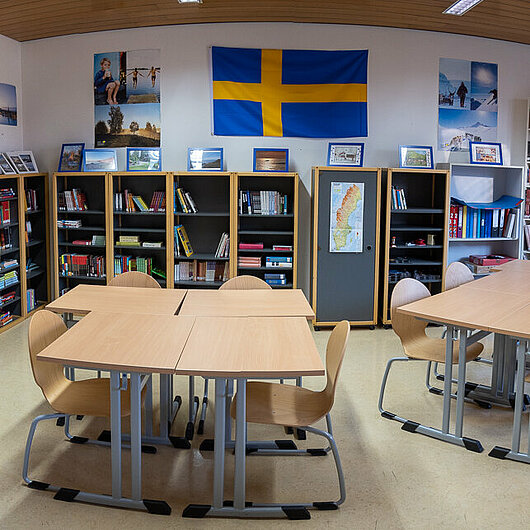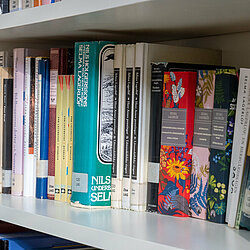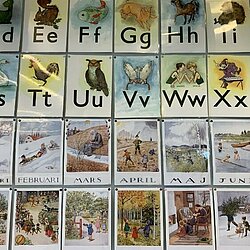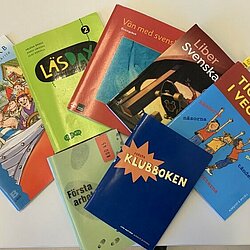For many people in Germany, red wooden houses with white window frames between idyllic lakes and forests come to mind when they think of Sweden. The former director of the Goethe-Institut in Stockholm, Berthold Franke, once called the romanticised idea of the supposedly carefree country life in Sweden the Bullerby syndrome, or Bullerbysyndromet in Swedish. But, in the southern Swedish province of Småland, here and there it really does look as nice as Astrid Lindgren describes it in her “Six Bullerby Children” novels. But nature and landscape are only part of the country's great diversity, which Swedish pupils at the European School Munich learn from.
Swedish is one of the Germanic languages and is relatively closely related to Norwegian and Danish in particular, so that people also understand each other. Swedish students at the ESM are part of SWALS, the Students without a language section, as the international section at the European Schools is officially called. They are enrolled in one of the larger language sections and receive additional lessons in which they learn the Swedish language, the history of the country and its culture.
Astrid Lindgren's books are, of course, highly popular reading material, especially in Primary School, and not only among Swedish schoolchildren. The stories of Pippi Longstocking, Emil of Lönneberga, Ronja the Robber's Daughter and The Six Bullerby Children have been translated into over 100 languages. The novels, which have in common that they encourage children to be children, have already influenced many generations. But there is also a lot of Swedish world literature to discover for young pupils at the Secondary School. They read Selma Lagerlöf and August Strindberg, among others, but also contemporary crime novels by Stieg Larsson, Maj Sjövall, Åsa Larsson and Henning Mankell - in the original language, of course. In any case, there is plenty of reading material: the Swedish classroom at the Secondary School has its own small library.
The fact that Swedish history is also of interest to children from other countries is already proven by the great popularity of Vicky the Viking in Germany and elsewhere. In his home country of Sweden, the character by the writer Runer Jonsson is far less well known. The Viking Age is also relatively at the beginning of the timeline that the schoolchildren draw in Primary School. They gradually enter all the other epochs of Swedish history there. By the time they finally reach the present after two school years, the timeline is four metres long. How closely Swedish history is connected with the history of neighbouring countries, with European royal dynasties and various historical events and epochs in Europe is finally explored in greater depth in Secondary School.
Cultural highlights for the Swedish pupils, which cannot be missed at all at the European School Munich, are the Lucia Festival in the run-up to Christmas and Midsommar in June. They are, in a way, opposite festivals: the former takes place around the time of the winter solstice, the latter at the time of the summer solstice. On Lucia, children wear wreaths with candles on their heads, on Midsommar they wear flower wreaths.
But Sweden is not only a country of traditions and culture, it is also a country of science. Since 1901, in addition to the Nobel Prize for Literature, the Nobel Prizes for Physics, Chemistry and Medicine have been awarded in Stockholm and are considered the most important awards in their respective fields. And not only the historical Vikings were ambitious discoverers of the world: today, far to the north of Sweden, near the town of Kiruna, is the European Space and Sounding Rocket Range of the European Space Agency (ESA), from which weather balloons and rockets are launched. If you want to become a researcher yourself, you can study at any European university with the European Baccalaureate in your pocket - also, but not only, in Sweden.
Profile Sweden
- Capital: Stockholm
- Population: 10,3 Millionen (2019)
- Bank holidays: 6. Juni
- Accession to the EU: 1995
- The European motto "United in diversity" is "Förenade i mångfalden" in Swedish.
- Pupils with Swedish citizenship in the European Schools system: 505.28 (2020)
- You should know this Swedish phrase: "Lagom är bäst" - roughly "The golden middle way is best". The word lagom means "not too much and not too little".





